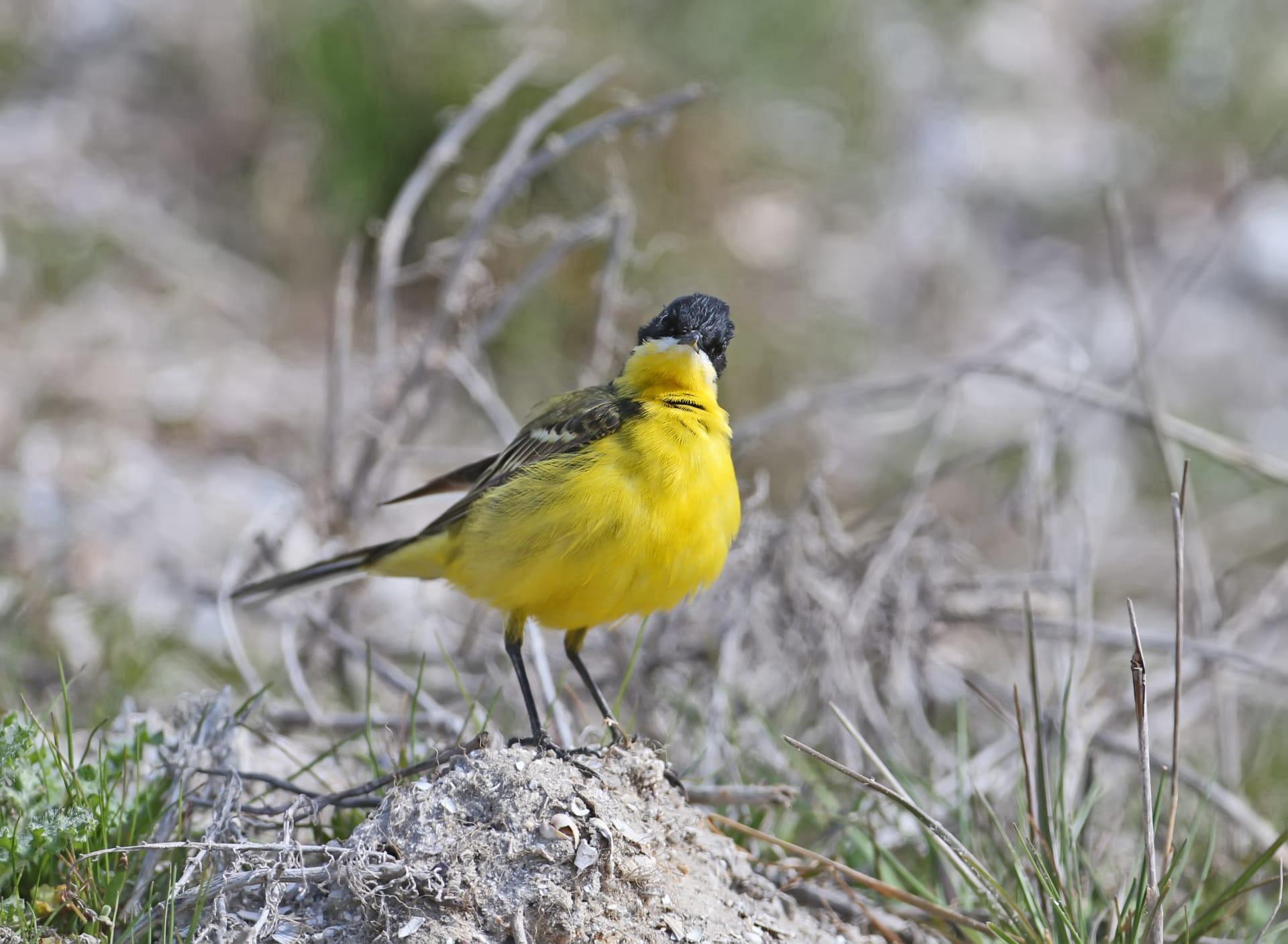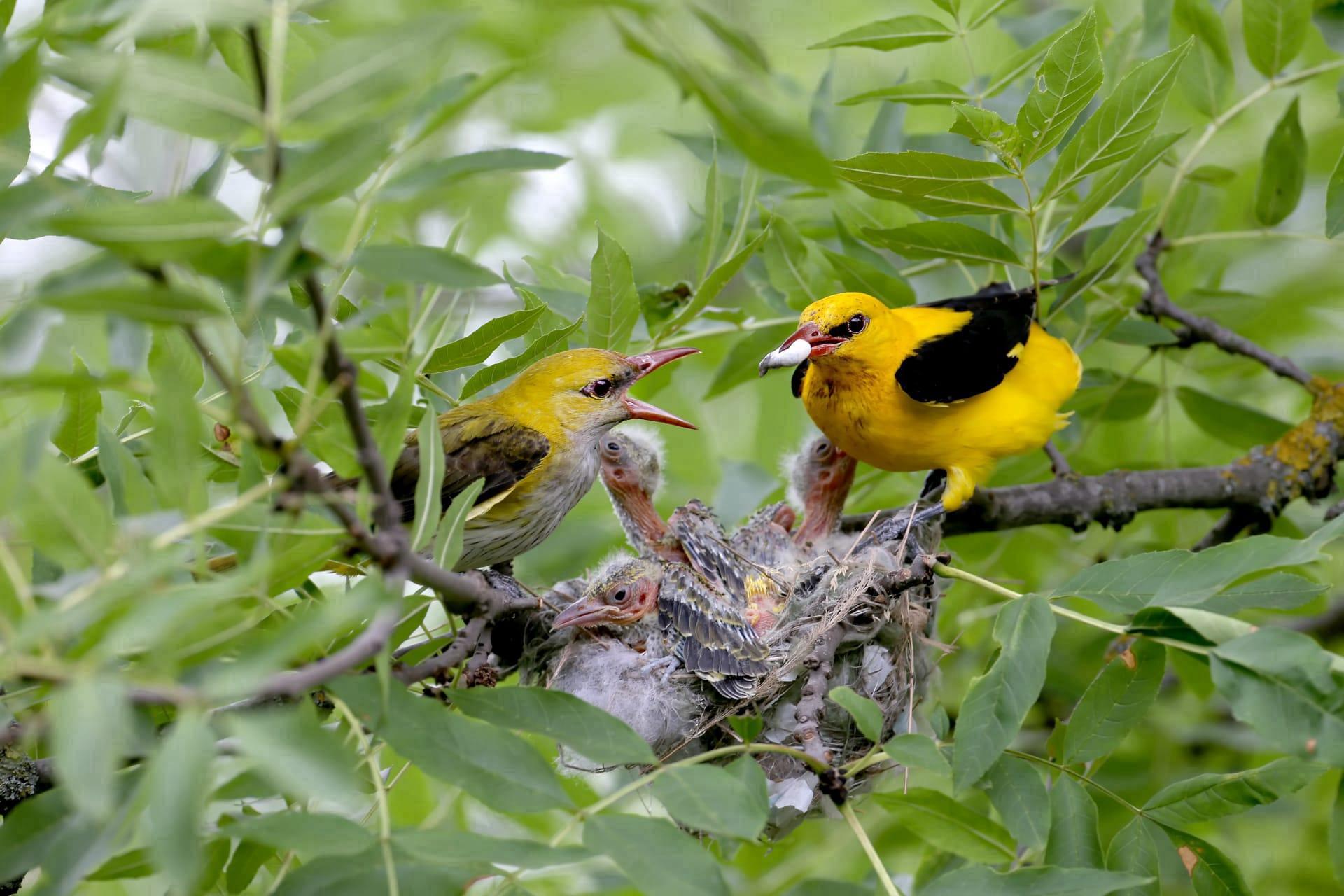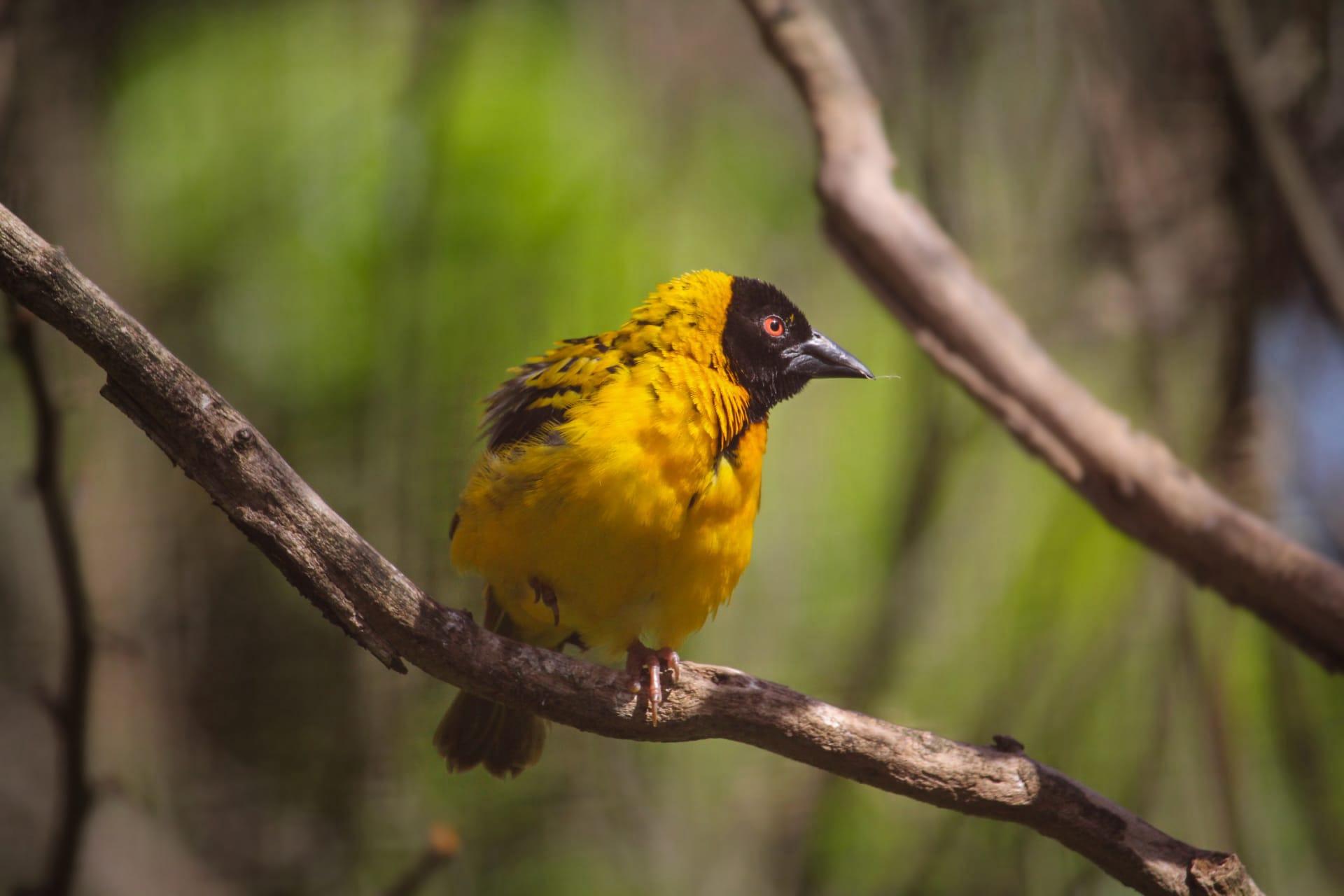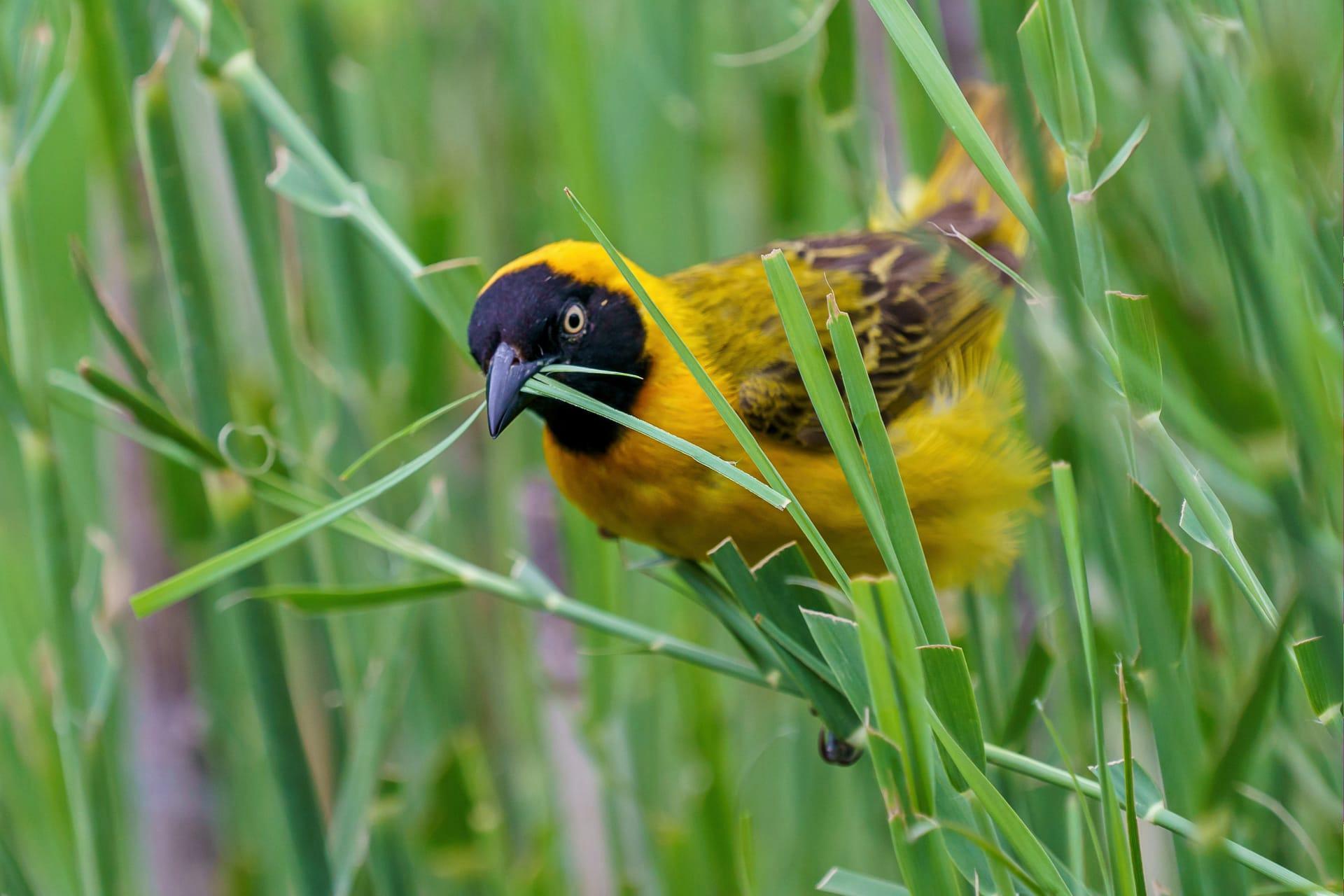Weaverbird Characteristics
- Home /
- Mini Encyclopedia /
- Animal /
- Weaverbird Characteristics
1
The Weaverbird, a small passerine bird, boasts a variety of species with varying sizes. Most of these species range from about 15 centimeters (6 inches) to 20 centimeters (8 inches) in length. These birds typically weigh between 25 to 60 grams, making them light and agile. Their lifespan is quite remarkable for their size, with many living up to 7 years in the wild. This longevity is a testament to their adaptability and survival skills.
One of the most fascinating organs of a Weaverbird is its beak, which is uniquely adapted for its intricate nest-building process. The beak is strong and conical, varying in size among species, and is perfectly designed for weaving and manipulating grass and twigs. This beak is a key tool in nest construction, which is an intricate process involving weaving together leaves and grasses to create a secure, comfortable home. This process not only showcases their architectural prowess but also plays a crucial role in their mating rituals.

2
Question: What makes the nests of Weaverbirds so unique and distinctive?
Answer: The nests of Weaverbirds are renowned for their intricate and elaborate construction. These avian architects use their beaks to weave and knot leaves and grass into elaborate structures. Depending on the species, the nests can vary from simple bowl-like shapes to complex, spherical structures with tunnels and chambers. Some species even build communal nests, large enough to house over a hundred pairs, each with its own chamber. These nests are not only a marvel of natural engineering but also provide safety from predators and harsh weather conditions. The construction of these nests is a critical aspect of the Weaverbird's mating process, as males often build and display these nests to attract females.

3
Weaverbirds are known for their agility and dexterity, especially during flight. They exhibit rapid, direct flight patterns, often interspersed with swift turns and dives. This agility is vital for their survival, allowing them to navigate through dense foliage and evade predators. Their flight speed varies, but it is generally fast, making them adept at escaping threats and traversing large distances in search of food.
In terms of feeding, Weaverbirds primarily consume a diet of seeds and insects. Their strong, conical beaks are adept at cracking open seeds, while their acute vision and quick movements make them efficient insect hunters. Some species are known to change their diet seasonally, depending on the availability of food sources. This adaptability in feeding habits helps them to thrive in various environments.

4
Weaverbirds are predominantly found in sub-Saharan Africa, although some species are also seen in tropical Asia. They inhabit a range of environments, including savannahs, forests, and even agricultural lands and urban areas. These birds are highly adaptable and can thrive in different habitats, as long as there is sufficient food and suitable sites for nest-building. The presence of water bodies is also a crucial factor in their habitat selection.
Reproduction is a central aspect of the Weaverbird's life. These birds are known for their complex mating rituals, which involve males building intricate nests to attract females. The male performs a display, often involving flapping wings and loud calls, to draw attention to his nest. If the female approves of the nest, she will mate with the male. Some species are monogamous, while others may have multiple partners. The female typically lays 2 to 4 eggs, which she incubates, while the male may help in feeding the chicks once they hatch.

5
Book: "The World of Weaverbirds" by Jonathan Kingdon. This book, published in the United Kingdom in the early 2000s, offers an in-depth look into the lives of Weaverbirds. Kingdon, a renowned zoologist, illustrates the diverse species of Weaverbirds found across Africa and Asia. The book delves into their unique nest-building skills, mating rituals, and survival strategies, making it a comprehensive guide for bird enthusiasts and researchers alike.
Book: "Weaverbird Ecology and Behavior" by Dr. Susan W. Smith. Published in the United States in the late 1990s, this book focuses on the ecological aspects and behavioral patterns of Weaverbirds. Dr. Smith, an ornithologist, presents detailed observations and studies on how these birds interact with their environment. The book covers topics such as feeding habits, habitat selection, and the impact of environmental changes on their populations, offering valuable insights for academics and nature lovers.